The Mugellani Potato Tortelli are a type of fresh pasta typical of the Mugello, an area rich in woods and mountains between Tuscany and Emilia. They are a coarse and rustic type of tortello, quite thick, with a delicious filling of potatoes, parmesan, butter, and nutmeg! There are many variants, and this one comes directly from my mom’s recipe book. Like all filled fresh pasta, they are a bit laborious to make but very tasty and perfect for Sunday lunches or when guests are over! If I have piqued your interest, grab the rolling pin and let’s start!
For more ideas on fresh pasta, first courses, and condiments, I recommend checking out these links:
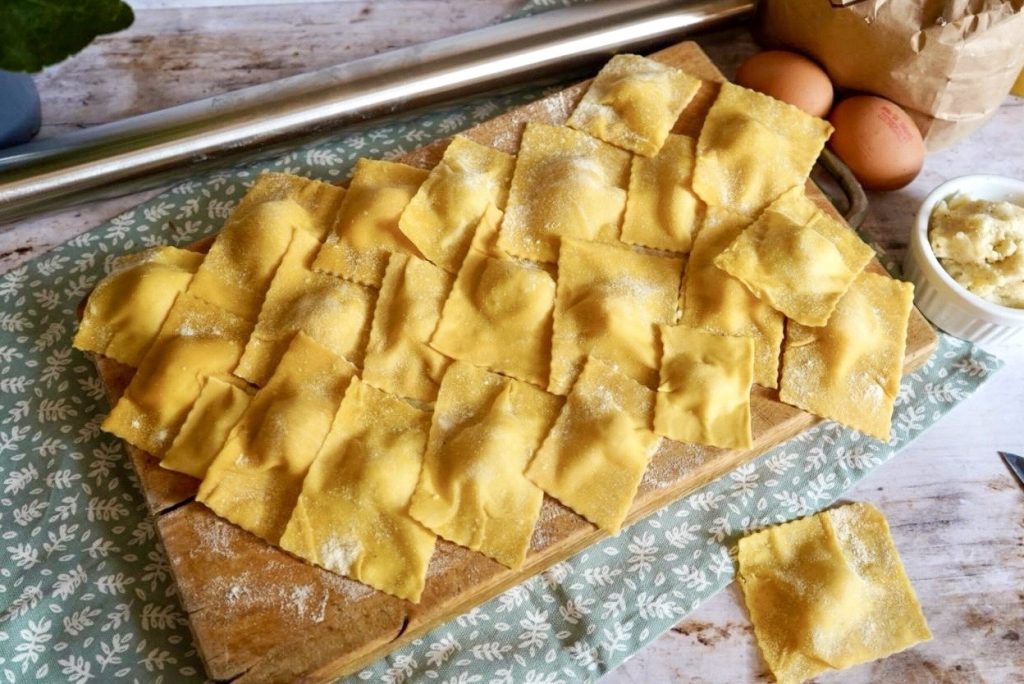
- Difficulty: Medium
- Cost: Very Affordable
- Rest time: 30 Minutes
- Preparation time: 30 Minutes
- Portions: 8 People
- Cooking methods: Stovetop
- Cuisine: Regional Italian
- Region: Tuscany
- Seasonality: Autumn, Winter, and Spring, Summer
Ingredients
- 3 1/4 cups all-purpose flour
- 3/4 cup semolina flour
- 4 eggs (large)
- 2 tbsps extra virgin olive oil
- 1 tsp fine salt
- 1.1 lbs potatoes
- 1/4 tsp nutmeg (up to 1.5)
- 3/4 cup grated parmesan
- 1 tsp fine salt
- 1/2 tsp pepper
- 1/4 cup butter
Tools for Making Potato Tortelli
- 1 Potato Masher
- 1 Bowl
- 1 Cling Film
- 1 Pastry Board steel
- 1 Pasta Machine
- 1 Fork
- 1 Dough Scraper
- 1 Small Bowl
- 1 Brush
- 1 Fluted Pastry Wheel
Steps
Like all fresh pasta, preparing Mugellani potato tortelli takes a bit of time and skill, but the result is worth the effort. The first thing to do is prepare the filling to let it rest and stabilize the flavors: Then it will be the turn of the dough.
Boil the potatoes in salted water and let them cool well.
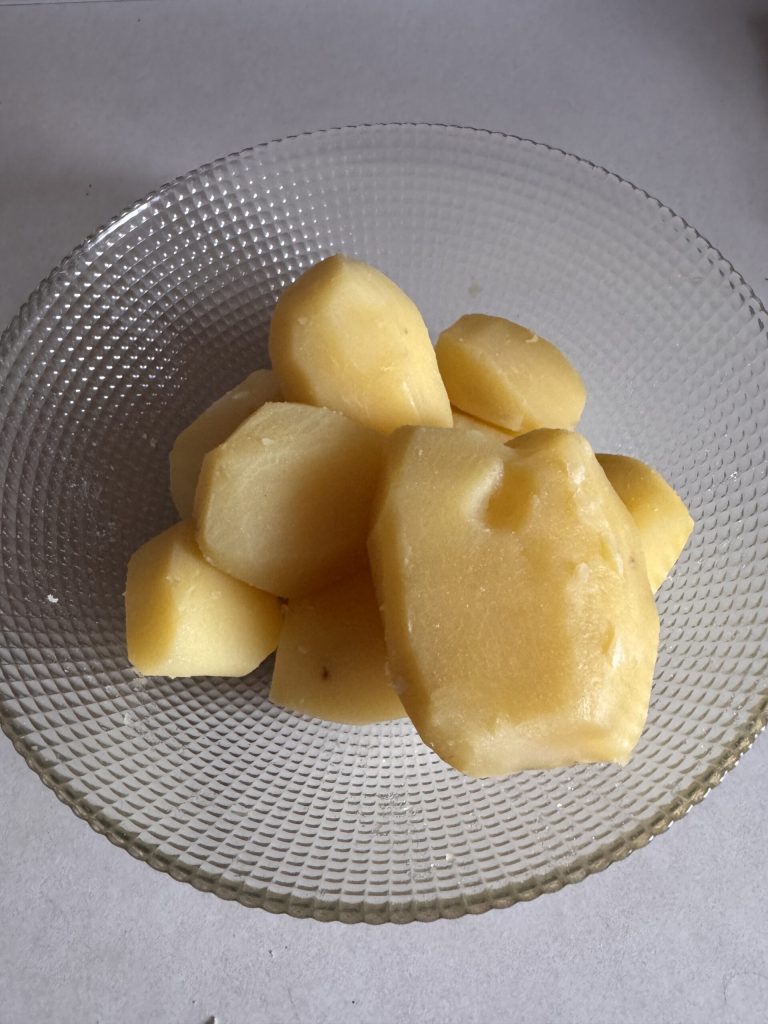
Using a potato masher (or a large blender), mash all the potatoes into a bowl.
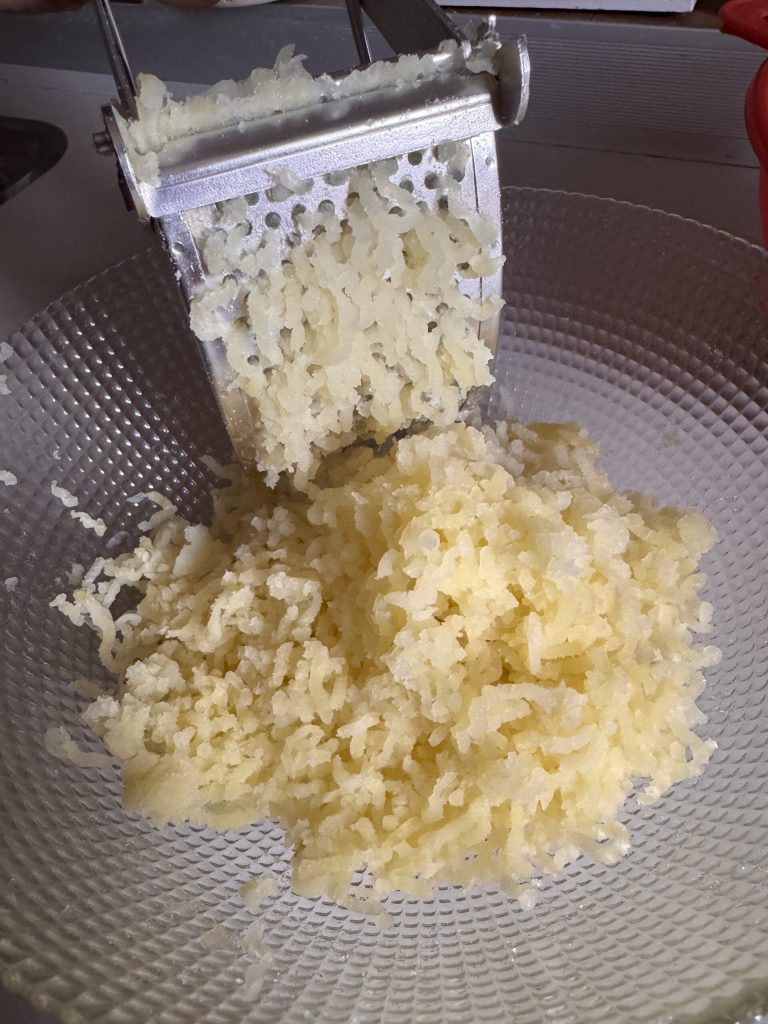
Add the soft butter in pieces and mix.
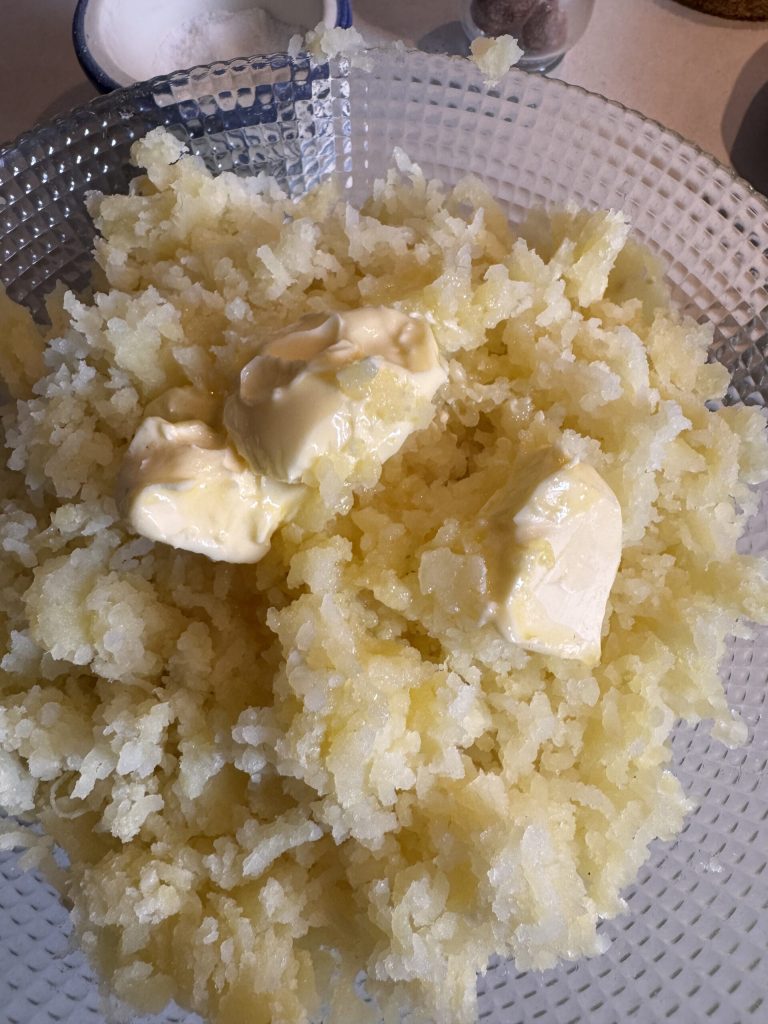
Add pepper, salt, and nutmeg and mix.
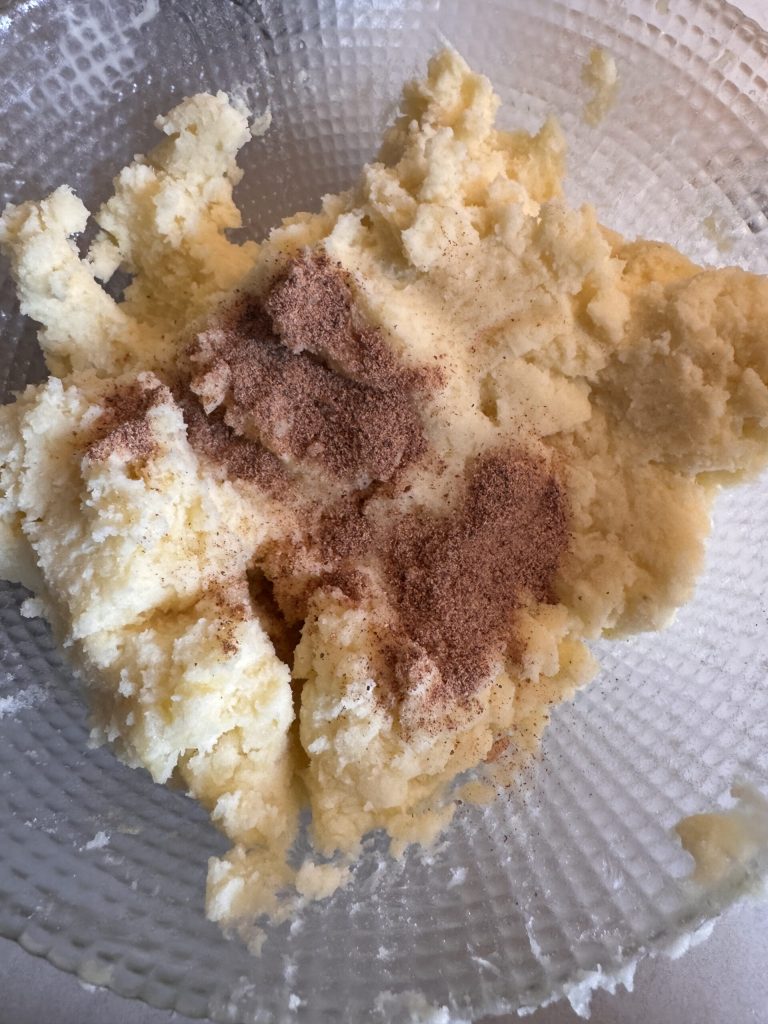
Then add the grated parmesan and finish mixing well.
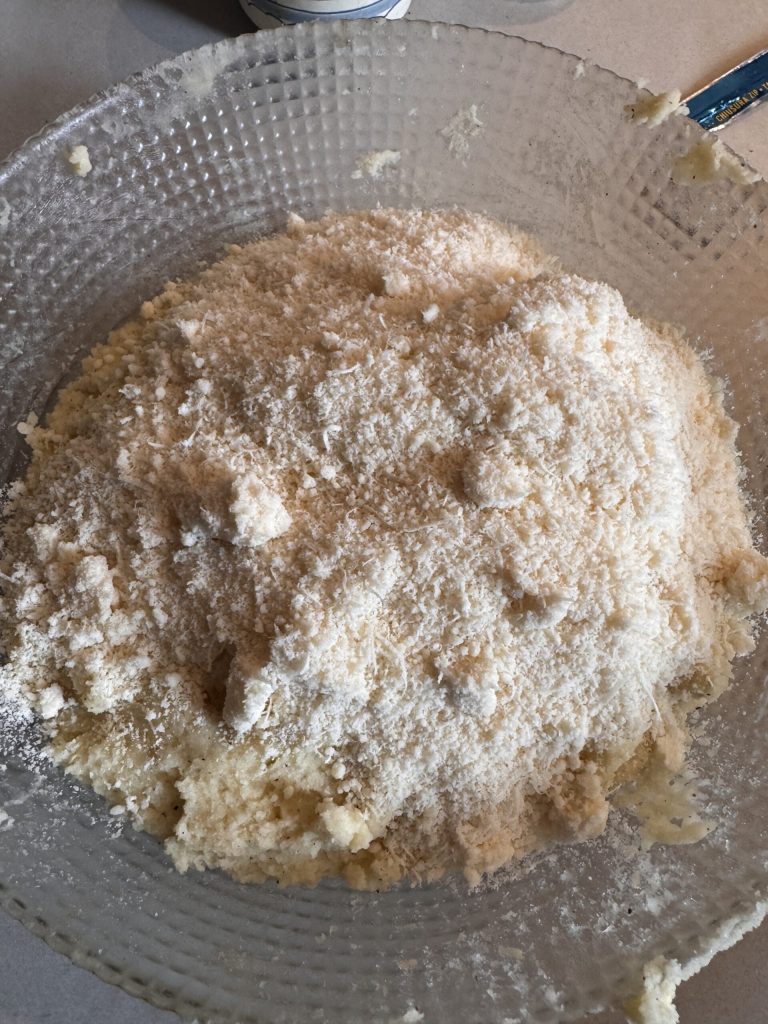
Cover with cling film and let it rest for at least an hour at room temperature to blend all the flavors.
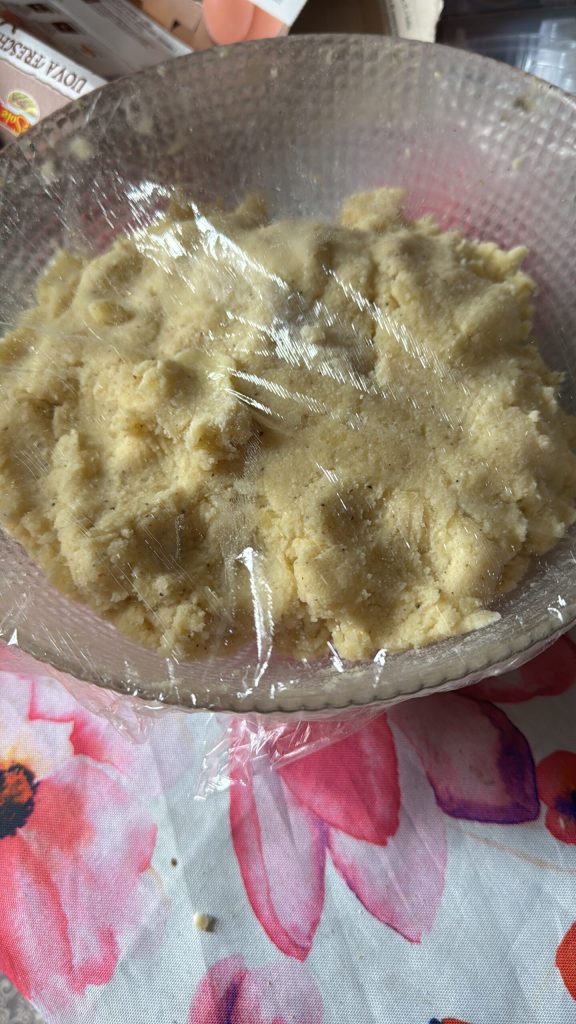
Mix the two flours together and pour them onto the work surface. Form the classic well.
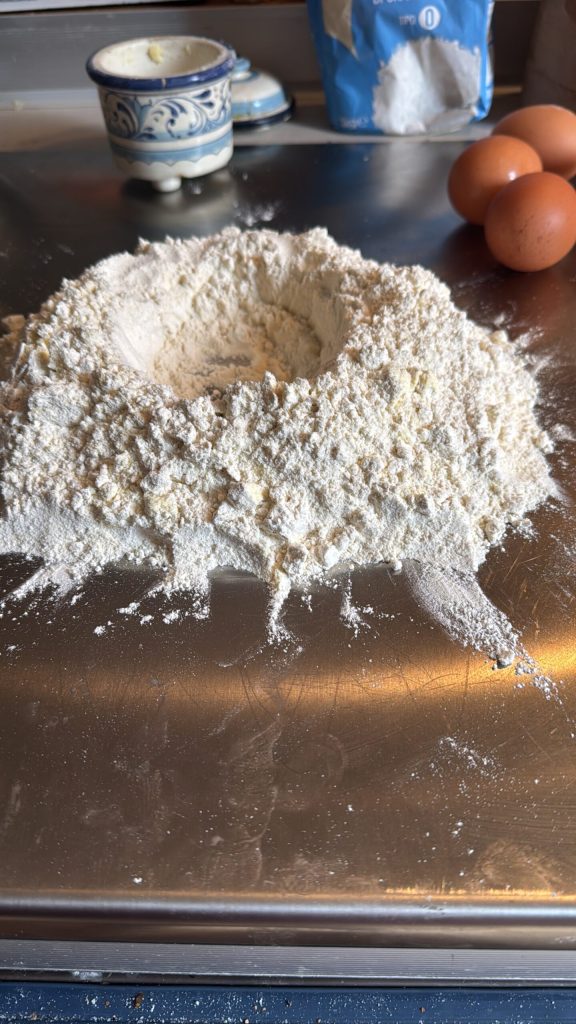
Put the salt in the center and break the eggs into the well.
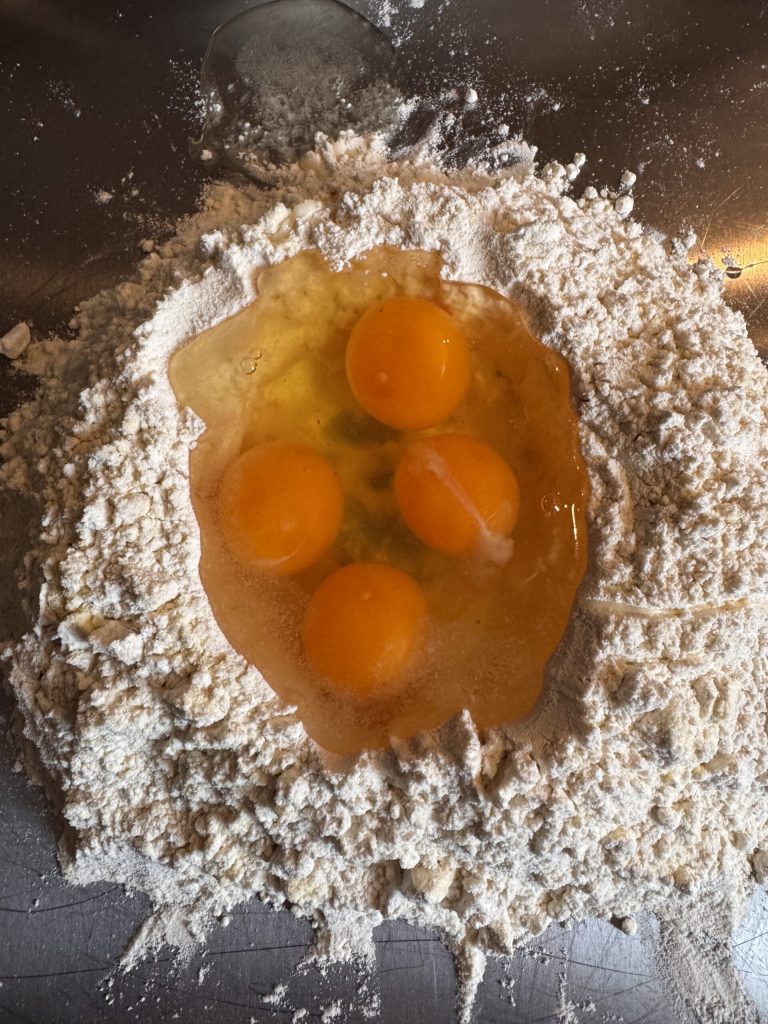
With a fork, beat the eggs and start incorporating the flour. You can also choose to beat the eggs before adding them to the well.
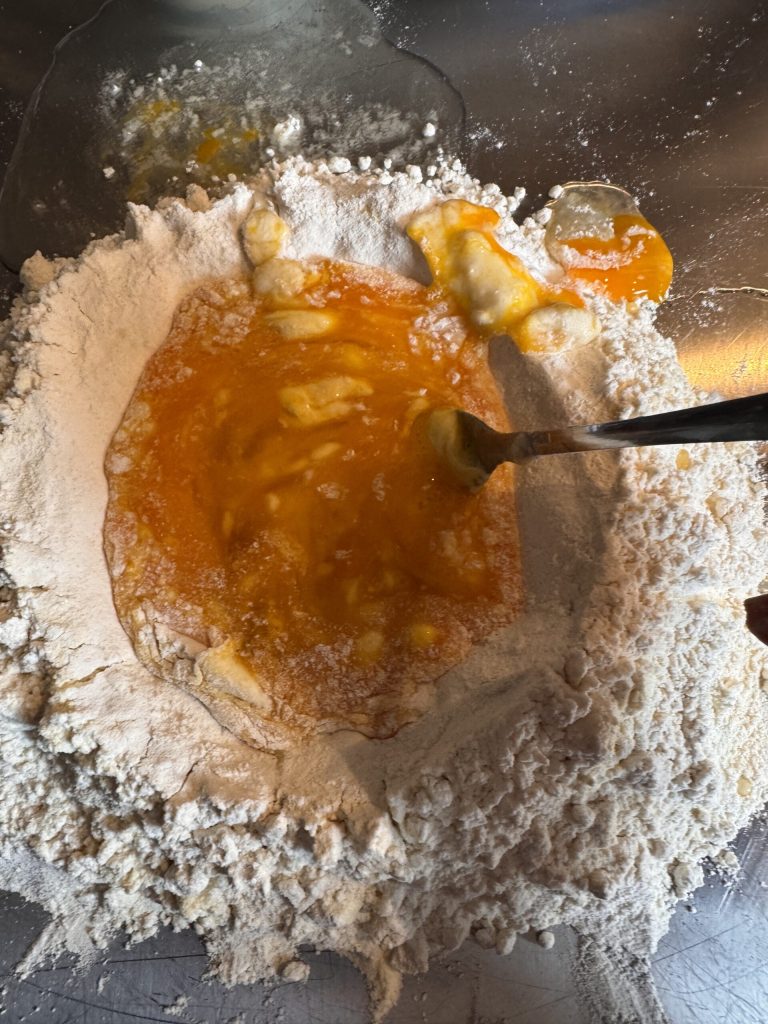
Once the eggs are absorbed by the flour, start kneading the dough vigorously. As soon as a fairly homogeneous mass forms, add the oil and knead. I prefer to do it this way, as it helps with workability, but of course, the oil can be added before the eggs.
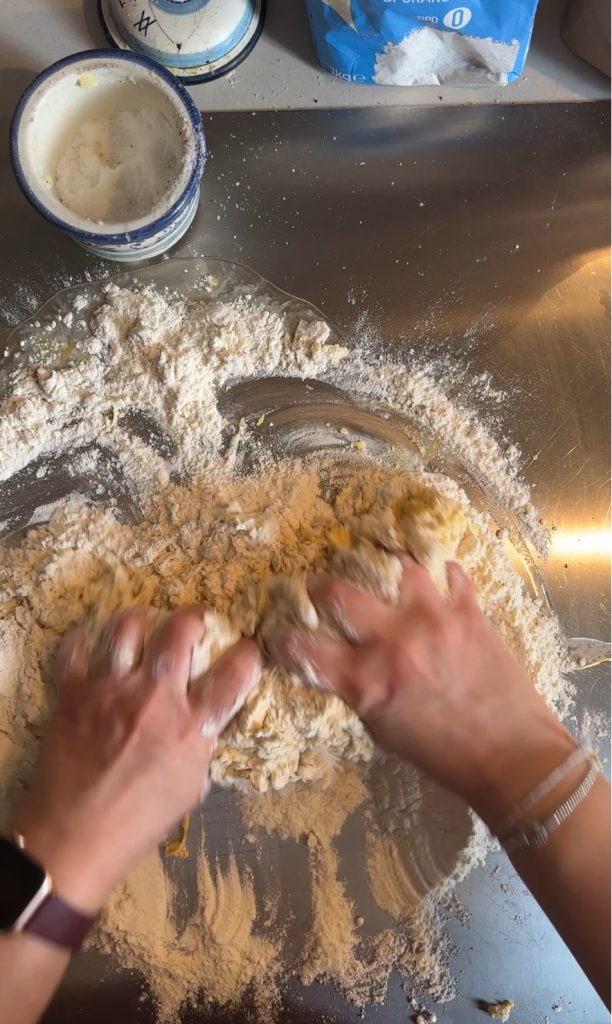
Once the dough is elastic and firm, form a ball, cover it with cling film and a cloth, and let it rest for 30/45 minutes.
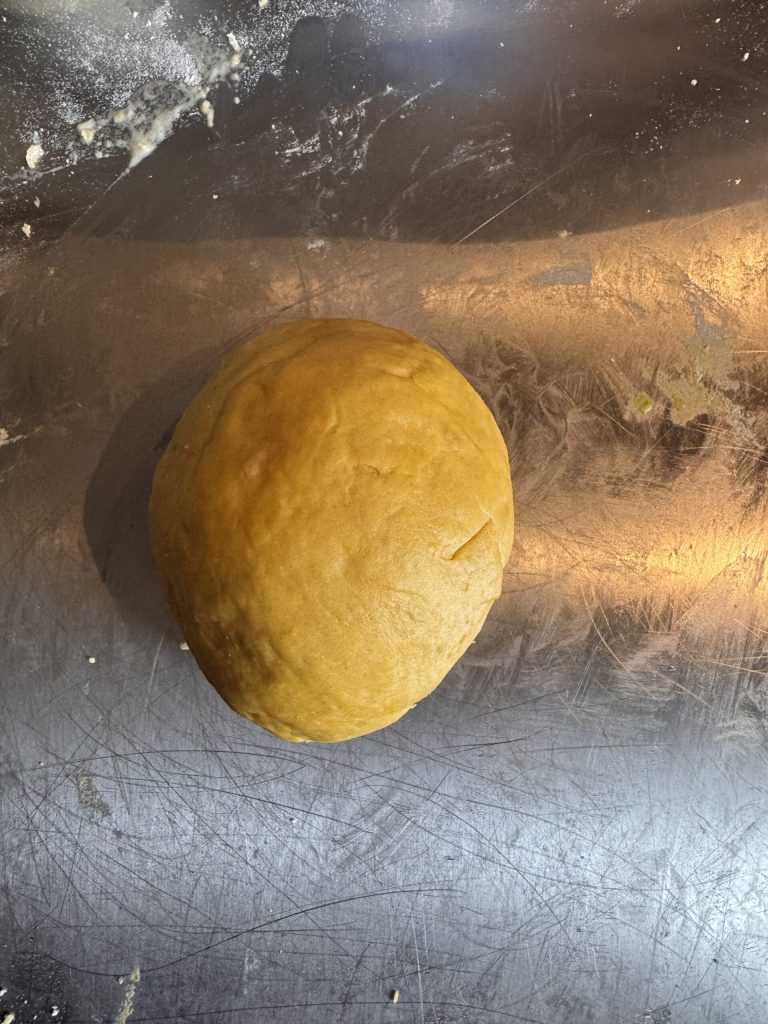
With a dough scraper, cut the dough into four to be able to roll it out better.

To roll out the dough, you can use a rolling pin and a bit of elbow grease or a pasta machine, manual or electric. The sheet should be thin but not too thin, as the characteristic of these Mugellani potato tortelli is to be made with a very rustic sheet.
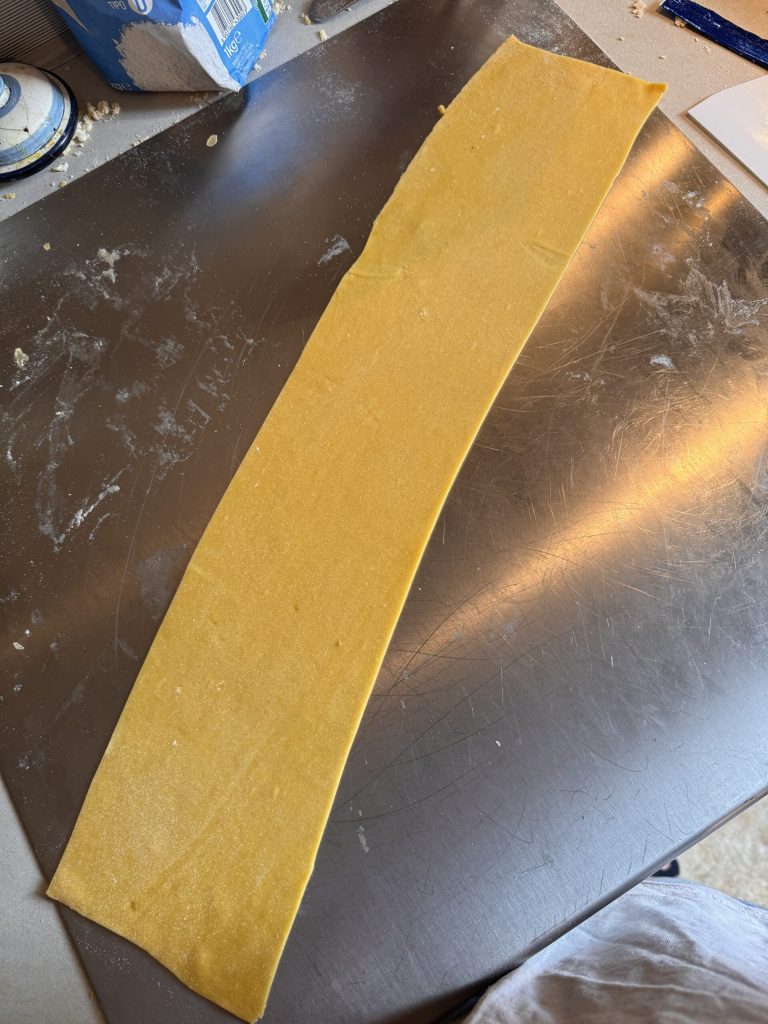
Once the whole sheet is ready, make balls of filling to start forming the Mugellani potato tortelli.
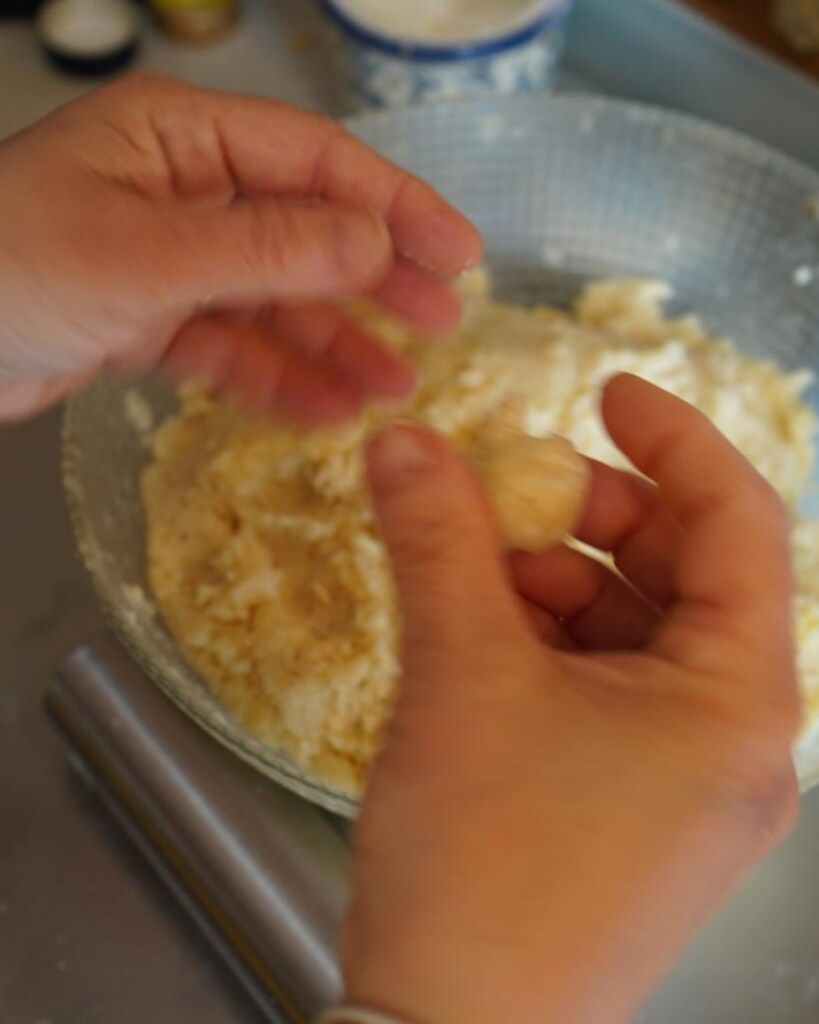
Place them about 1/2 to 3/4 inch apart on the rolled-out sheet on the lightly water-brushed work surface.
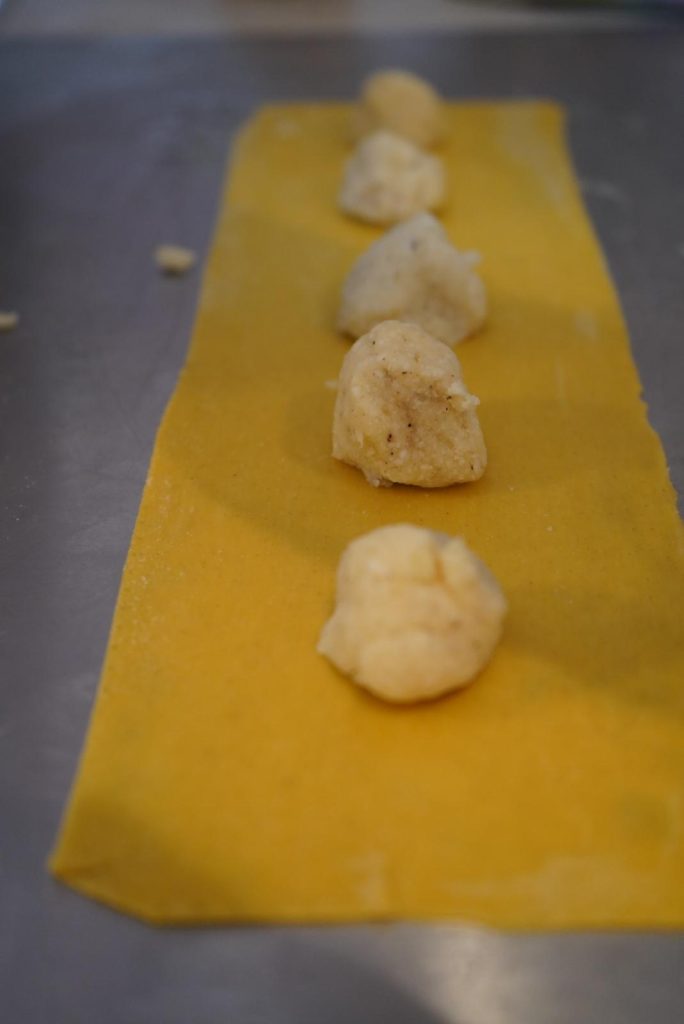
Cover with another sheet and press it on top.
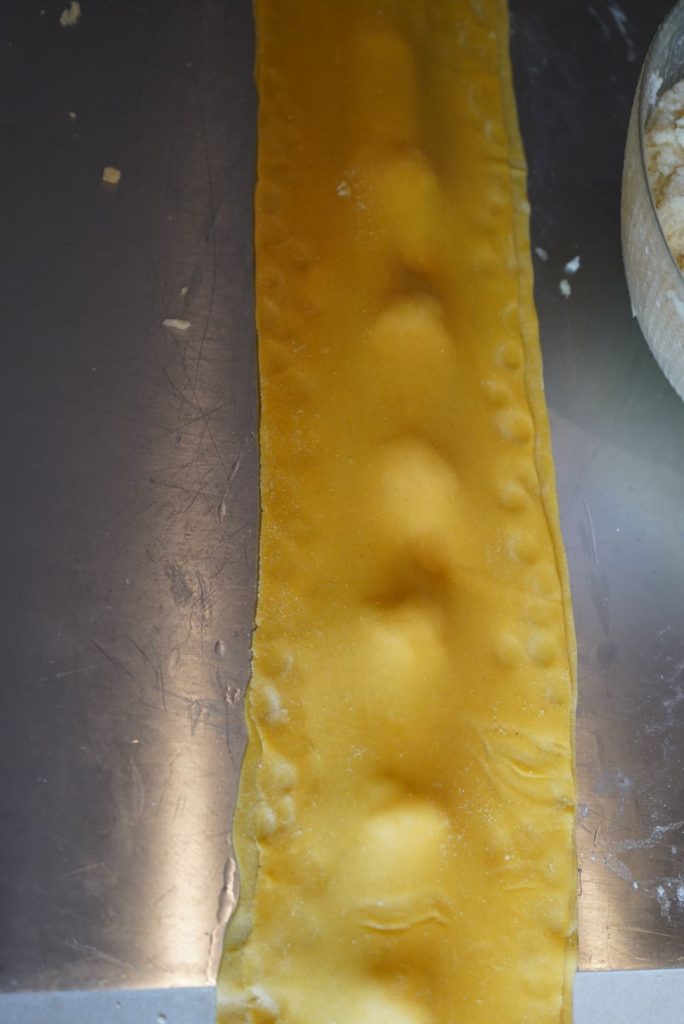
With the pastry wheel, form the tortelli into large squares.
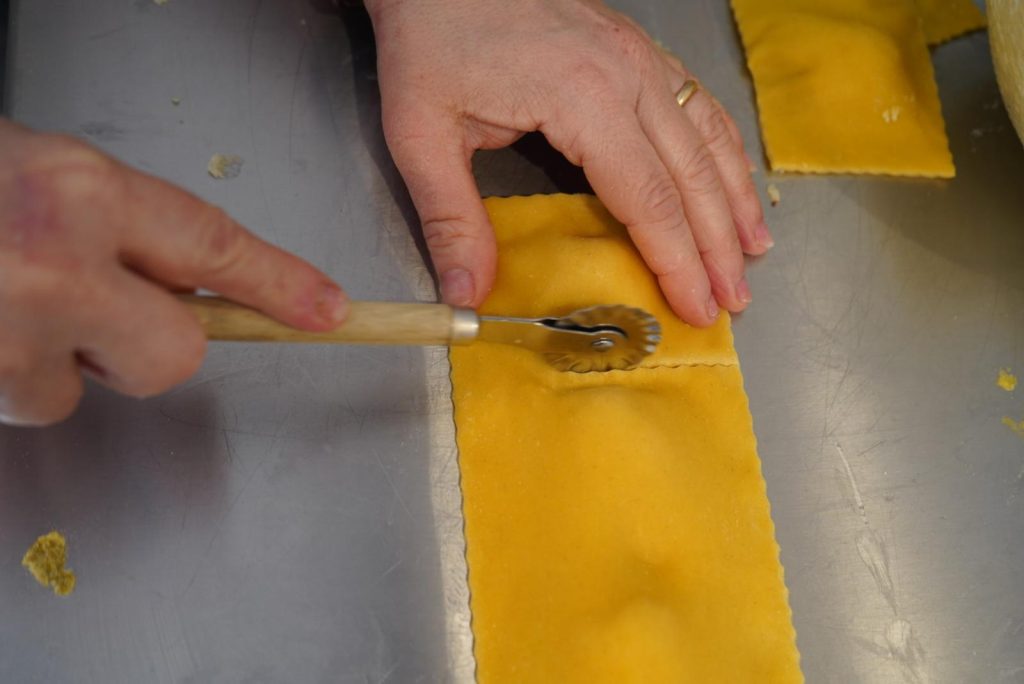
Continue like this until you run out of dough.
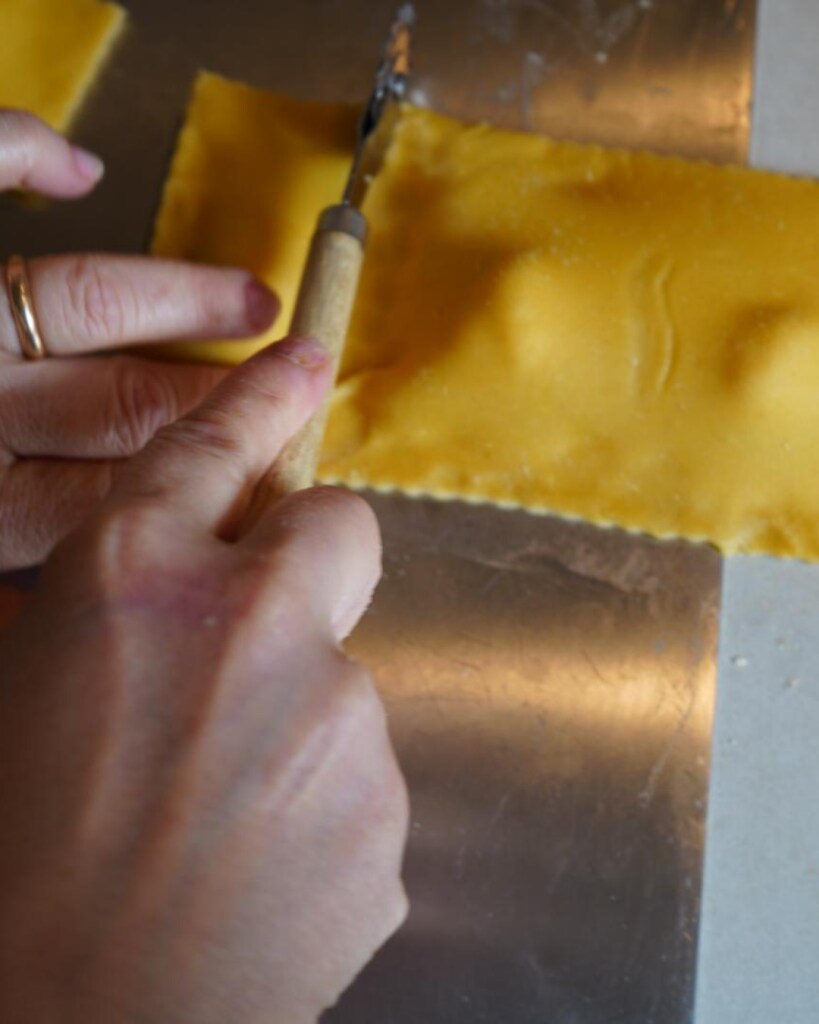
As you form them, place the tortelli on a lightly damp cloth sprinkled with a bit of semolina. Cover them with another cloth until the dough is finished.
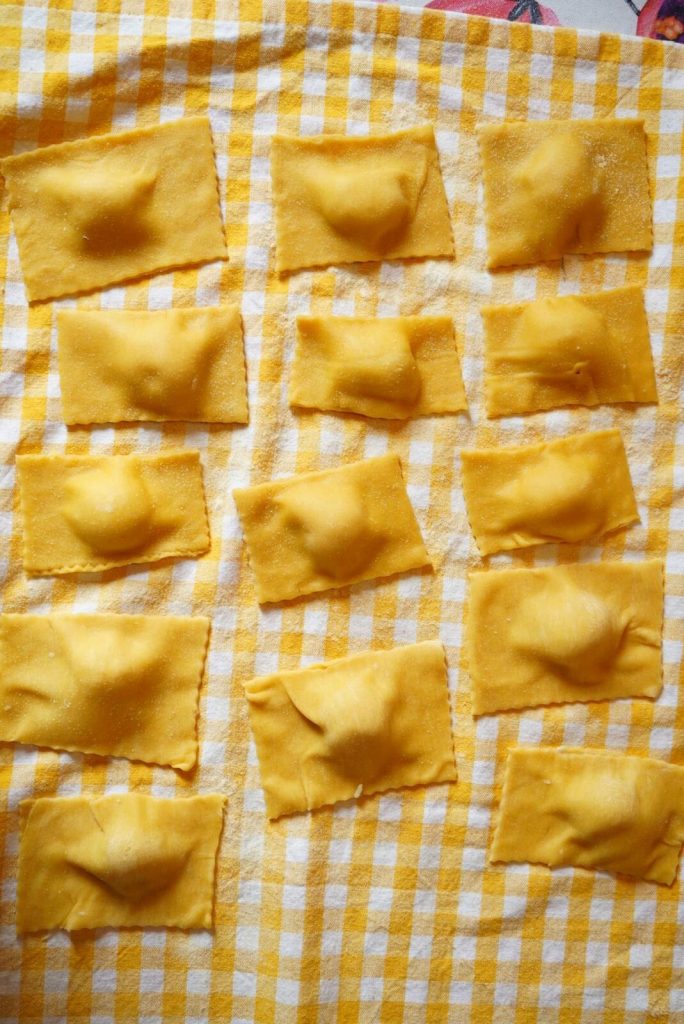
Bring plenty of salted water to a boil in a very large pot. Drop 7/10 tortelli at a time, turning them so they don’t stick to each other.
Drain them with a slotted spoon and place them directly on the serving plate.
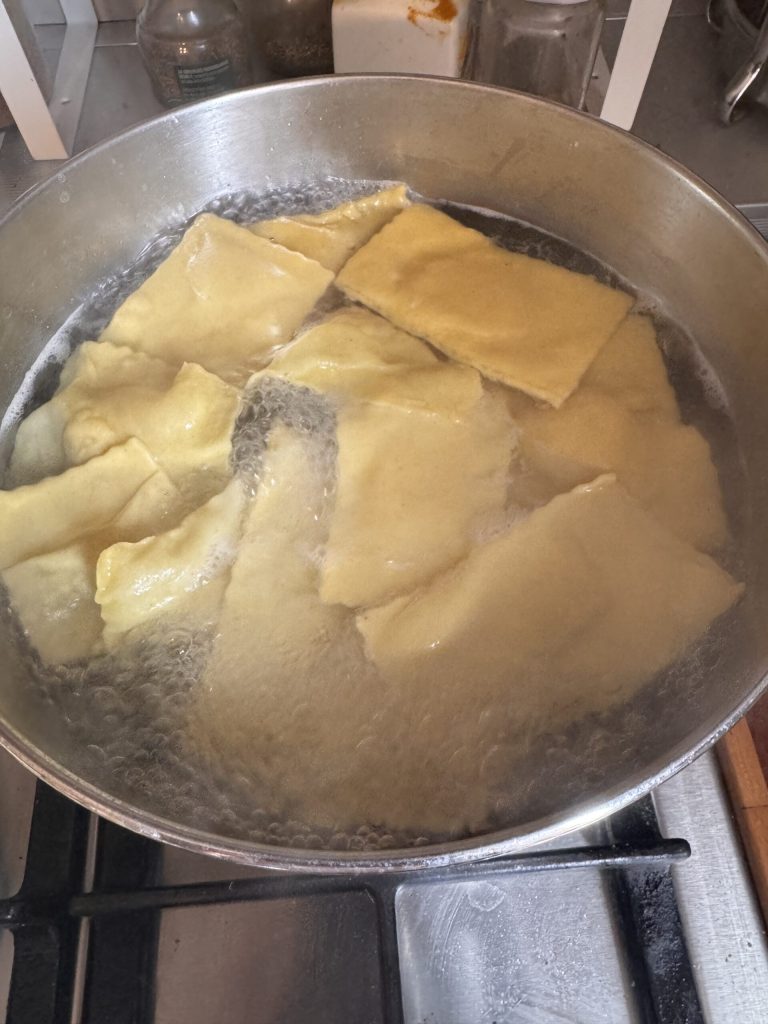
Mugellani Potato Tortelli are traditionally eaten in three ways: with ragù (beef or game), with tomato sauce, or simply with butter and sage.
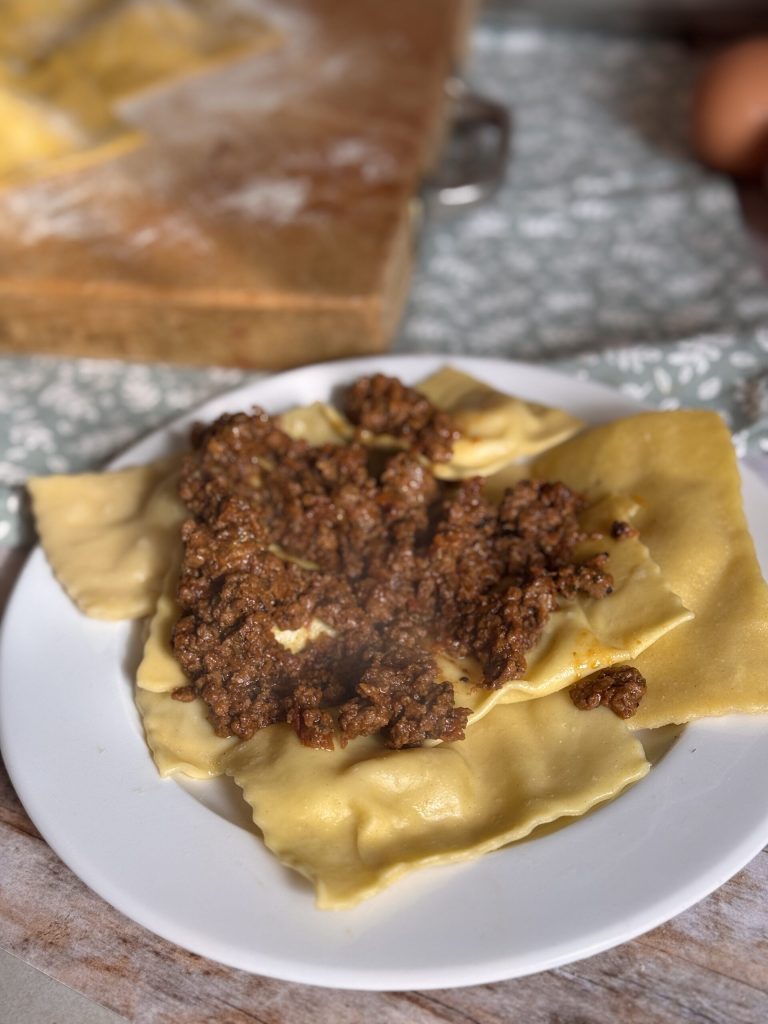
Preservation of Mugellani Potato Tortelli
Mugellani Potato Tortelli are perfect if consumed fresh within the day. However, they can be stored in a sealed paper bag in the refrigerator to be consumed a few days later. Alternatively, they can be frozen. In this case, they should be cooked from frozen. If you’ve already tried these tortelli, come tell me on Instagram, where I also share a reel showing the shaping steps!

FAQ
What if I have leftover filling?
Delicious croquettes! I found this recipe in my mom’s cookbook, and the filling’s quantity was twice what I’ve listed here. I ended up with a lot of leftover filling, which I turned into croquettes… probably the intention was that!
How to prevent them from opening during cooking?
I moisten the sheet precisely for this reason, then carefully seal the edges.

